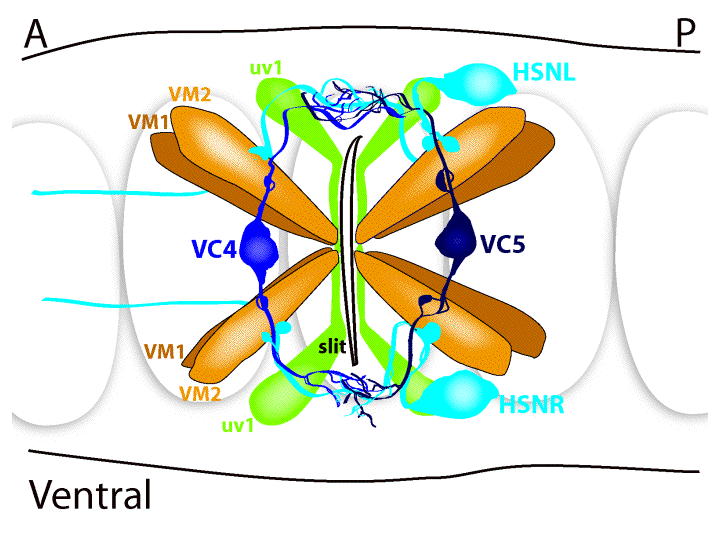Behavioural states and neuromodulation In humans, alternative behavioural states related to mood, aggression, satiety and arousal are controlled by neuromodulators such as dopamine, serotonin, and neuropeptides. Nematodes also exhibit alternative states of behaviour, which interestingly appear to be controlled by the same molecules. We have been studying these phenomena in C. elegans, where it is possible to study the action of neuromodulators on individual cells and relate these effects mechanistically to whole behaviours. A behavior we have particularly focused on is egg-laying. The motorneurons that drive egg-laying are functionally complex, making use of at least two neuromodulators (serotonin and a neuropeptide) and one fast neurotransmitter (acetylcholine). Analysis of data obtained with an automated tracking system demonstrated that nematode egg-laying could be modeled as a novel random process in which animals fluctuate between discrete behavioral states: an inactive state and an active state. Using a combination of genetics, behavioral analysis, and in vivo neuroimaging, we are probing the molecular and neural basis for these behavioral states. |
||||
 |
||||
| Here is a movie of a worm laying eggs. Notice that animals increase their locomotion before egg-laying. | ||||
| Here is a movie of the vulval muscles contracting. Note the calcium influx visualized with cameleon. | ||||
Papers on egg-laying and behavioural states: Shyn SI, Kerr R, Schafer WR. (2003) "Serotonin and Go modulate functional states of neurons and muscles involved in C. elegans egg-laying behavior" Curr. Biol. 13: 1910-1915. +supplementary data |
||||
Effects of dopamine and serotonin on other behaviours: Kindt KS, Quast KB, Giles AG, De S, Hendrey D, Nicastro I, Rankin CH, Schafer WR (2007) "Dopamine mediates context-dependent modulation of sensory plasticity in C. elegans" Neuron 55: 662-676. Supplemental material. |
||||